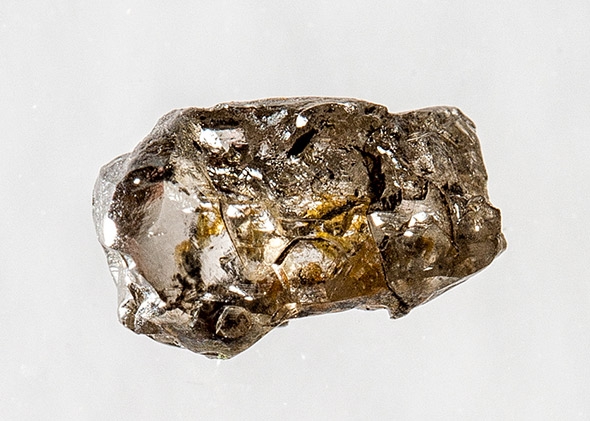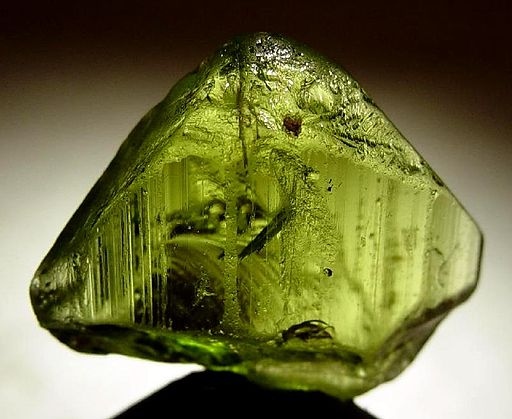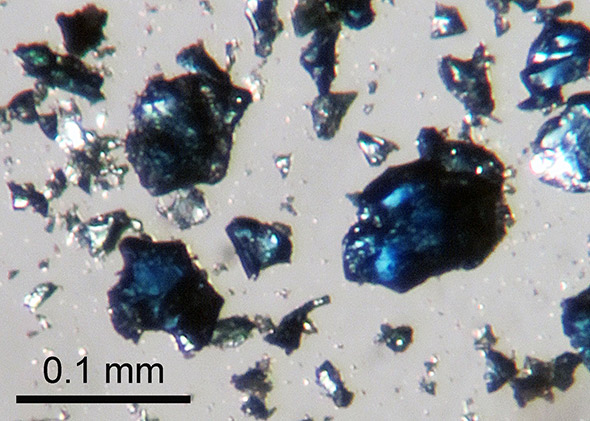Discovering Underground Oceans Through Ringwoodite Crystals
A recent discovery by the Nature journal has proven that an expansive reservoir of water exists in the Earth’s mantle that is three times the size of our existing oceans. This new find clearly changes what we’ve been taught about the Earth and if water exists deep underneath the Earth’s transition zone.
What supported this find was the recent discovery of a diamond in Brazil that encapsulated a blue crystal called ringwoodite that was believed to have surfaced from a volcano eruption. Ringwoodite has only been found in meteors, so the discovery of this terrestrial sample has caused a stir. This event has been scoffed at by skeptics, as it is believed that a common eruption has slow moving magma, therefore, with pressure decreasing as you rise to the surface, they believe ringwoodite would revert itself into olivine. Although this is not the case with the recently found ringwoodite included diamond, this discovery has helped the world realize the potential waterworld that lies beneath us.

So what exactly is ringwoodite?
Ringwoodite is a form of olivine that forms only under high pressure. It’s a polymorph (an alternate crystalline form) of the natural mineral olivine. Before now, ringwoodite has only be examined in meteorites and created synthetically in laboratories. Let’s just say this is not just any mineral that can be found in someone’s everyday crystal rock collection.
This ringwoodite crystal was named after Australian geologist, Alfred Ringwood, when he stated a theory that there were possible olivine polymorphs present in the Earth’s mantle (rock layer between the Earth’s surface and its core) that tend to vary the speed of seismic waves. While Alfred’s theory was accepted, it could not be proved valid as the transition zone where ringwoodite is found – somewhere between the upper and lower mantle, about 255-410 miles underneath the Earth – cannot be reached.
Northwestern University geophysicist, Steve Jacobsen, has worked on a couple of experiments analyzing the properties of ringwoodite. He created lab made ringwoodite by pressing olivine through a diamond-tipped vice. Then he bounced tiny seismic waves off of hydrated ringwoodite to prove that there are changes in the waves that pass through the Earth’s mantle – which imply the presence of ringwoodite deep down in the core.

Jacobsen has said, “It’s good evidence the Earth’s water came from within”, but he also stated that the water in these ringwoodites is commercially useless and is not suitable for drinking or swimming. He added that the water cannot even be extracted as it is bound up in rock. The Earth’s mantle however, is still performing a great job at making our planet habitable because it keeps the water under us within the crust. If the water in the transition zone would ever find its way onto the Earth’s surface, a huge percentage of the Earth’s landmass would be inundated with water and the only places to live would be on mountain tops!
Sources:
- http://www.slate.com/articles/health_and_science/science/2014/03/water_in_earth_s_mantle_revealed_by_diamond_containing_the_mineral_ringwoodite.html
- http://thespiritscience.net/2014/06/19/massive-ocean-discovered-towards-the-earths-core/
- https://answersingenesis.org/geology/rocks-and-minerals/diamond-ringwoodite-reveals-water-deep-earths-mantle/
